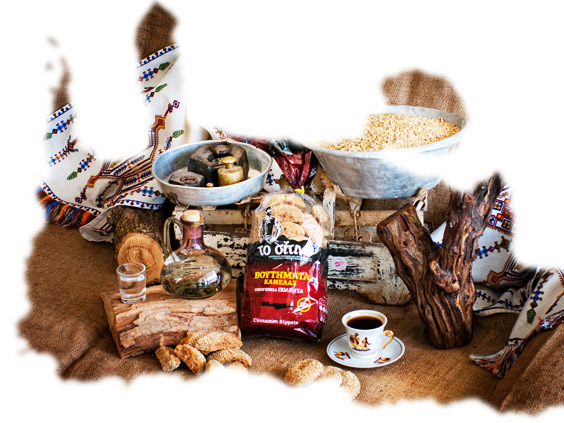Cellulose: enhances digestion and bowel function.
Starch: supplies our body with energy.
Protein: promotes the development and maintenance of the muscular system.
Vitamin E: has beneficial antioxidant properties.
Vitamins B1 and B2: maintain the proper function of the nervous and digestive system, as well as the health of the skin and the eyes. They also help to release energy from food.
Magnesium: has an antidepressant effect.
Dietary fibres: protect against cardiovascular disease and help lower total cholesterol and bad cholesterol (LDL). They increase the feeling of saturation and enhance digestion and bowel function.
It is a staple food. Different types are used to produce white and wholegrain flours.
Its main difference from soft wheat, apart from its hardness and glassy grain, is its protein and gluten content.
It belongs to the same botanical family as wheat and barley. Rye is one of the hardiest cereals, as it is able to adapt to various climatic conditions and acidic soils, and is also resistant to diseases.
It belongs to the same botanical family as wheat and barley. It is rich in beta-glucans (dietary fibres) that help lower cholesterol.
This crop needs more water but less heat than wheat and barley. It is generally considered a ‘health food’.
Dinkel flour is produced by a primitive wheat species of excellent quality that belongs to the same family as common wheat.
Its peculiarity lies in its mild taste, its high nutritional value and its tough outer husk that protects the grain, thus helping it maintain its nutrients.
However, Dinkel is not suitable for people suffering from coeliac disease. Nevertheless, some people with wheat allergy or mild wheat intolerance can consume Dinkel without any unpleasant symptoms.
Emmer wheat (Triticum dicoccum) is one of the oldest cereals known to man and is also called Zea or Zeia. Samples of this cereal have been found in excavations of prehistoric settlements throughout Greece, with the oldest in Asia Minor dating back 12,000 years BC.
It was one of the first foods “tamed” by man, a basic cultivated species in the Middle East during the Old Testament and one of the main cereal crops in Egypt and Rome.
Emmer wheat was also a staple of ancient Greek diet. Greeks would not eat bread made of wheat; they would rather give it to the animals. They preferred bread from Zeia or barley. It was only as an exception that they ate barley-wheat bread.
It is considered one of the most wholesome and beneficial cereals. Emmer wheat has a high dietary fibre and mineral content.
It contains lysine, an essential amino acid that enhances the immune system and is a key element to the proper biochemical function of the brain.
It contains large quantities of minerals, particularly magnesium (10 to 20 times more magnesium than common wheat).
With a glycemic index of 40, this cereal regulates blood sugar and for this reason it is recommended for diabetics.
Emmer wheat does not cause allergic reactions like other wheat species, because it does not contain the genes that are linked with these allergies. It contains gluten, but in small quantities, is rarely allergenic and is highly digestible.
It is not recommended for people suffering from coeliac disease.
Gluten is an important source of nutritional protein contained in many cereals, such as wheat, barley, oat and rye, and is to be found in many everyday foods, such as bread, pasta, biscuits, cakes, and many more.
Gluten gives elasticity to dough and is responsible for the final chewy texture of the bread. Without the gluten, the bread would have no structure and would not rise.
However, some people are intolerant to gluten due to malabsorption.
The intolerance to gluten may be manifested with mild symptoms, such as lethargy, bloating, irritability and mild discomfort in the intestine, or even more severe symptoms attributed to coeliac disease.
If people suffering from coeliac disease consume gluten, even traces thereof, they will react with vomiting, diarrhoea, strong colic and abdominal pains.
Gluten-free pastries and bakery products are made with gluten-free flour, which is manufactured from raw materials such as rice, potato and tapioca, which do not inherently contain gluten.
Gluten-free pastries are completely safe for those suffering from coeliac disease or gluten intolerance.
Carob is especially nutritious. It was carob pods that helped St. John the Baptist survive while wandering in the desert as well as a large part of the Greek population during the period of the German occupation.
Carob flour is an ideal and much cheaper substitute for cocoa and chocolate. In addition, it has a natural sugar content of almost 50%, and can thus be used to replace sugar in various recipes.
Compared to chocolate, carob has 60% fewer calories, and compared to cocoa, it has the same calories but 1/10 of its fat.
It is particularly rich in calcium, magnesium, potassium and vitamins B2 & B6.


